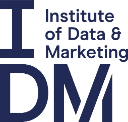Everyone's talking about big data, from vendors and commentators to agencies and marketing practitioners, but what does it really mean for marketing? How seriously does it need to be taken and what are the first steps to adoption?
What is Big Data?
The commonly accepted definition of big data is known as the Three V's:
- Volume - clearly, the number one characteristic of big data is that there's a lot of it. But volume by itself isn't enough, and even relatively small quantities can seem like a lot when you're trying to work with it.
- Velocity - rapidly changing data means there's not just a lot of it, but it needs to be handled in near real time too. Clicks, visits, purchases, Tweets, posts and video uploads generate an endless stream of data to process.
- Variety - the many different sources and types of data being generated today contribute to the overall challenge, particularly unstructured video feeds, photos and social media posts.
Should we care?
The danger with the concept of big data is that it becomes a bandwagon onto which everyone jumps especially vendors and the media. Getting caught up in a whirlwind of hype is counterproductive and risks damaging the perception of the role data can play.
Gregory Piatetsky-Shapiro [http://www.twitter.com/kdnuggets], a leading big data commentator, probably sums it up best when he says, "The phenomenon is real. The potential is real. What is new is just a buzzword. Maybe it will not produce miracles."
On balance, the phenomenon and benefits of big data are real and should be taken seriously, albeit with a note of caution, so what are some of the key steps to getting started?
What to do
Approaching a big data initiative can seem overwhelming, so here are a few suggestions to help you get underway.
- Define objectives. Avoid rushing into a new project and start by defining the objectives of a big data initiative. Ask yourself what questions need to be answered, where is information needed, how often should it be updated, delivered, and shared and what is the business impact?
- Think small. Are you really dealing with "big data" at all? Standard tools that may already exist in your organization are entirely capable of managing very large data volumes. Consider whether all of the V's of big data are actually involved, particularly velocity and variety.
- Break it down. Even where a true big data scenario does exist though, all available data doesn't necessarily have to be consolidated for analysis to take place. Look at the most important data streams, such as click streams, social media posts and transactions, and deploy dedicated tools appropriate to each data type.
- Obtain agreement and buy-in. It's always easier to swim with the current, so look for ways to link up with existing initiatives and executive priorities. Build new metrics alongside existing reporting structures and presentation and avoid the introduction of unnecessary new ones.
- People. IDC estimate that 50% of new marketing hires will soon come from a technical background, with many of these adopting the new role of "data scientist". Thought needs to be given to where these staff will be found - graduates, in-house, overseas hires?
- Data management and preparation. The old adage about data processing remains true in the era of big data, except that it becomes Big Garbage In, Big Garbage Out! Tackling all the usual data quality issues is particularly crucial where multiple sources are being consolidated, with particular emphasise on consistency, duplication and completeness.
- Execution. Once the objective setting, planning and agreement are in place, the focus for execution should be on the data that can most easily be turned into actionable insight and deployed.
- Work with IT. The rise of cloud computing and concepts such as the chief marketing technology officer makes it tempting to think that marketing can go it alone. If IT aren't involved though, it probably isn't big data and if it is big data and IT aren't involved, it will probably fail!
- Keep Talking. As well as the tools and expertise that almost certainly already exist within your organization, there's likely to be a wealth of insight waiting to be tapped into across Sales, Marketing Operations and Customer Service. And of course don't forget to speak to customers and prospects themselves, who are usually delighted to share their opinions!
In conclusion
True big data is not so much about quantity, but also different types of information from many different sources arriving in real time. Much can be achieved by managing and making use of rich data sources through conventional means and it's important not to get caught up in the hype. Start with small focused initiatives, clearly define objectives and milestones, obtain cross-organization buy-in and ensure that the necessary technical expertise is engaged. Take these small steps and the benefits of big data will soon arrive.
If you would like to learn more about the world of data marketing, then why not enrol onto the IDM's one day course Data Driven Marketing, where you can gain a complete understanding of data, calculate customer value, and develop strategies for improved, insight-based, ROI-focused marketing.
Did you find this blog useful?
At the IDM we are passionate about educating marketers and providing resources to help advance your career.
If you are interested in enhancing your CV and upskilling, browse through our wider range of marketing courses and qualifications; from one-day short courses to post-graduate diplomas.
Our learning and development team will be happy to advise based on your needs and requirements.
